The youngest bride in the history of Russia, or Why is it early at 12 and late at 16
Categories: History
By Pictolic https://pictolic.com/article/the-youngest-bride-in-the-history-of-russia-or-why-is-it-early-at-12-and-late-at-16.htmlInformation about the customs that prevailed in Russia before the advent of Christianity is very scarce and fragmentary. Something can be learned from the few birch bark letters that have come down to our time, something can be guessed by studying epics and legends. Gradually, bit by bit, scientists are finding out the details of the social, political and, of course, personal life of our ancestors. For example, researchers learned that girls in Russian villages and cities were married very early and there were reasons for that.
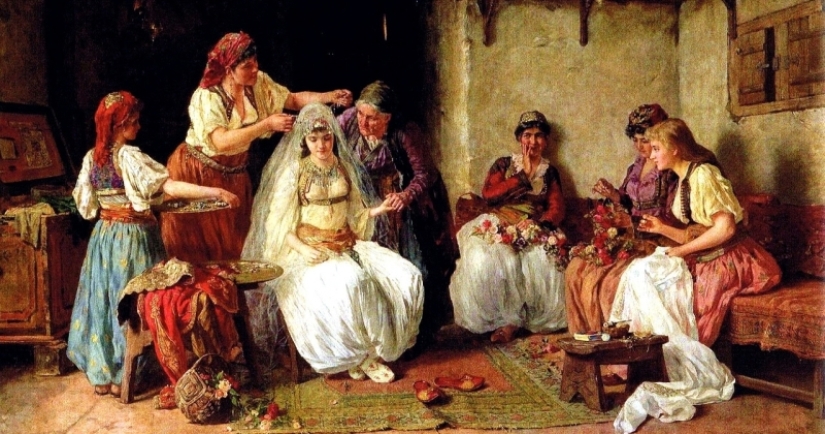
Written in the 12th century, The Tale of Bygone Years contains invaluable information about how people lived in Russia during the pagan period and the first centuries after baptism. The chronicle tells about the ancient custom of "stealing the bride from the waters" - when a girl with her consent was stolen on the riverbank, where she went to get water or to wash.
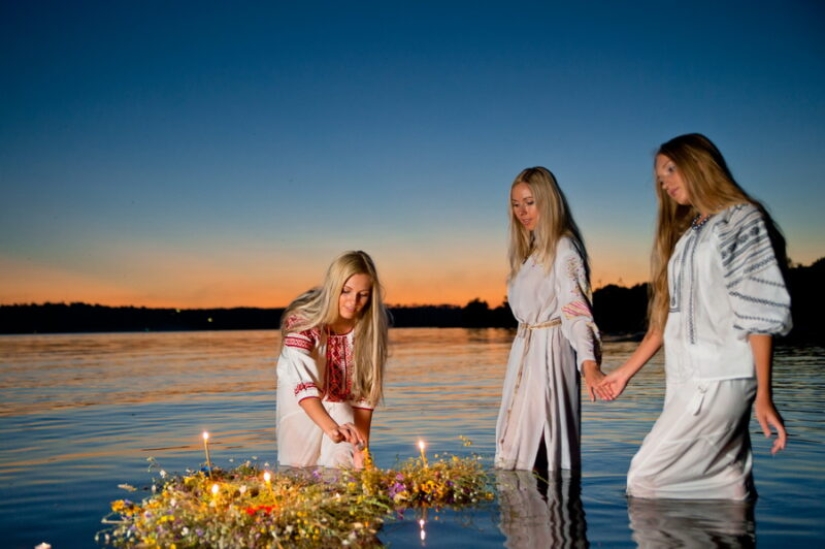
Brides were stolen, having agreed with her, and sometimes with their parents, without the slightest violence. They did it not all year round, but in a certain period, between the spring festival of the goddess Lada and the summer - Ivan Kupala. Often the bride was "stolen" during the festivities, in which the girls participated together with married women. It is not known exactly at what age it was customary to kidnap attractive beauties, but it can be assumed that this was done with 13-14-year-olds.
Historian Natalia Lvovna Pushkareva in her work "Women of Ancient Russia" wrote that in the 8th century there was no forced "abduction" in Russia and abduction was just a beautiful tradition. But later the girls began to be stolen for real and this changed the rules of matchmaking and marriage.
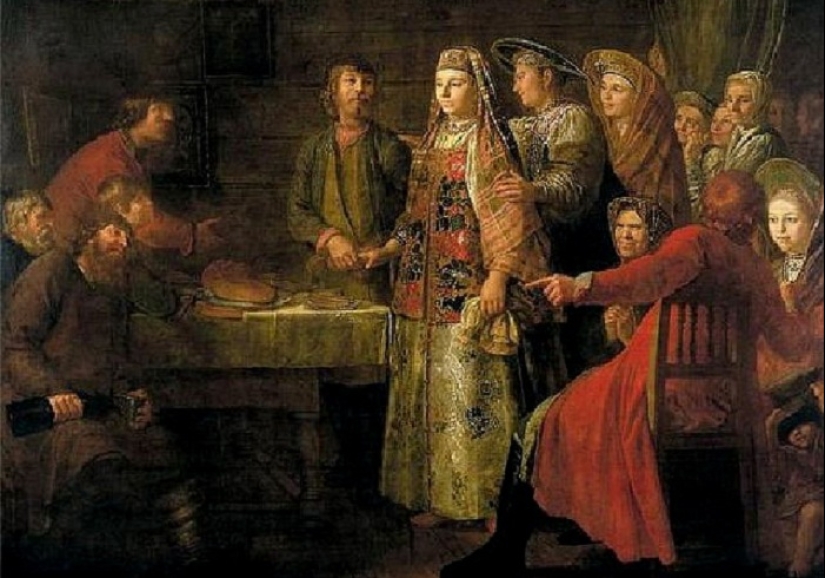
With the advent of the custom to kidnap brides treacherously, without persuasion, the girls began to be closely monitored, and the groom was chosen by their parents, at their discretion. The future wife was simply brought to her husband and confronted with the fact that she could not disobey. At first, the princes did this, but later the custom spread to the common people.
After the adoption of Orthodoxy by Russia, marriage rituals became more complex. There were such phenomena as collusion of relatives, matchmaking and betrothal, officially making a guy and a girl a bride and groom in front of people and God. All this did not always pass quickly — it happened that several years passed from the collusion of relatives to the wedding itself.
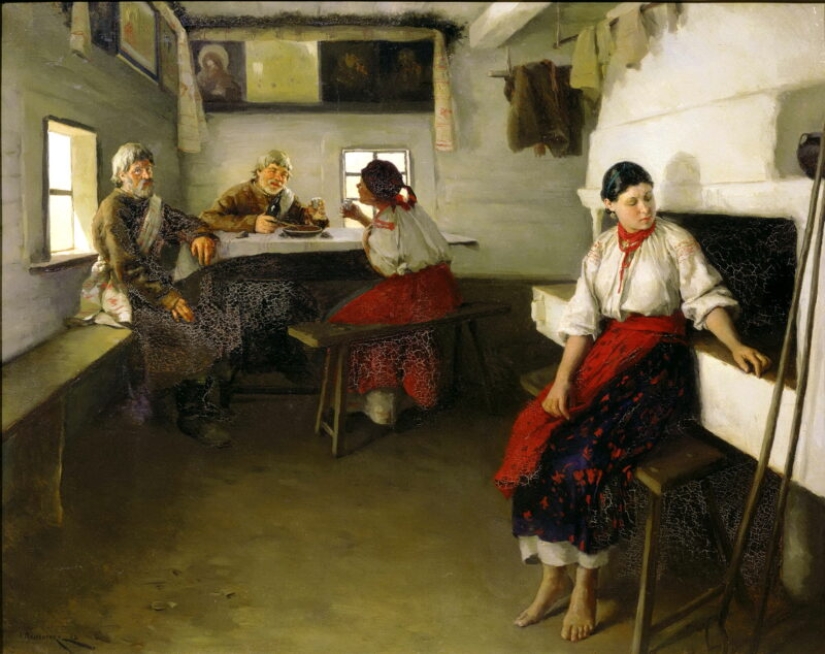
These customs gave rise to such definitions as "betrothed", that is, promised to the groom, as well as "betrothed", recognized as a bride. Apparently, there were no age restrictions at that time, since it is well known about the release in the 15th century of a church decree strictly prohibiting the marriage of girls under 12 years old.
It is possible that in the villages early marriages were one of the ways of survival, because there were many children in Russian families and getting rid of even one mouth was a relief. Unfortunately, early marriage did not benefit girls — childbirth in adolescence was often accompanied by complications and the death of those giving birth for the first time from "puerperal fever" was not uncommon.
In the Middle Ages in Russia they were married at different ages, starting from 12 and ending with 19 years. But if in a merchant or princely family the chance to marry a girl at the age of 16 was quite high, then in the peasant environment this age was considered the limit. After 16, the girl fell into the category of "old maidens" and her chances of arranging a personal life were low.
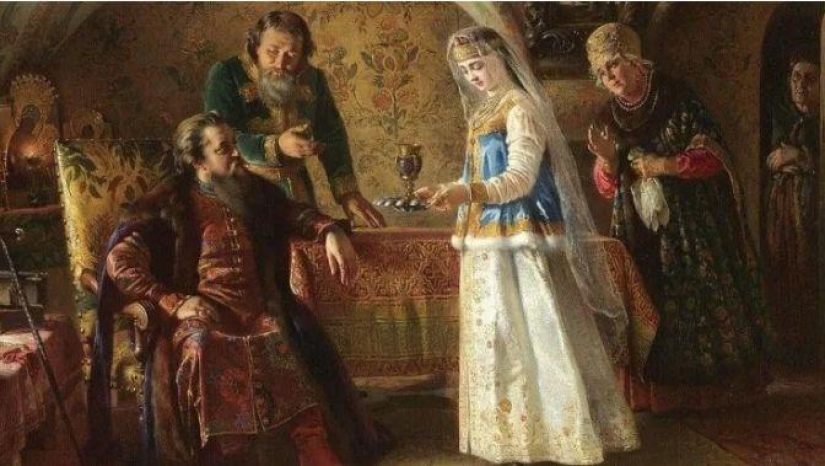
It is interesting that the church took care that the girls did not become "overdone". Since the care of the issue of the daughter's marriage was entirely entrusted to the parents, they were fined for poor performance of duties. But at the same time, the parents were also responsible of another kind — if they married their daughter by force and she took her own life, a court was waiting for them and the case could turn into not only a fine, but already a term in prison or exile.
It is known for sure that the eight-year-old Verhuslav, a princess from the Rurik family, the daughter of Prince Vsevolod Mstislavich from Novgorod, was promised in marriage to the Polish Prince Boleslav IV Curly, based on political considerations. This egregious, from the point of view of modern man, happened in the 12th century.
However, Verhuslav had to be a bride for four years, since the wedding took place only when she turned 12, in 1137. Of course, no one asked the girl's opinion and no one knows if she was happily married. Only one thing can be said for sure: her parents did not lose when choosing a groom, since Boleslav soon became the Grand Duke of Poland and owned the lands of Silesia.

Historical sources claim that Boleslav loved his wife and did not offend her. The Russian princess gave birth to her spouse three children - a daughter and two sons. Alas, fate measured out a little for her - Verhuslava died at the age of 37. The Polish prince grieved for a very short time and a year later he married Maria is another Russian princess, the daughter of a certain Rostislav Peremyshlsky, about whom nothing is known.
As for the youngest bride, whose name is recorded in history, it was five-year-old Maria, the daughter of Prince Boris Alexandrovich of Tver, engaged to the seven-year-old son of the Grand Duke of Moscow Vasily II Dark Prince Ivan III. It is quite clear that this marriage was also political and, from the point of view of the bride's relatives, flawless. Ivan III became the Grand Duke of All Russia. Engaged the young in Tver on an incredible scale.
The wedding of Maria and Ivan took place in 1452 in Moscow. When the couple walked down the aisle, the groom was 12, and the bride was barely 10 years old. In 1458, at the age of 16, Maria gave birth to her husband's first child, who was named Ivan. After that, the princess lived for another 9 years, and then suddenly died, apparently poisoned during a court intrigue.

Maria, who went down in history as the youngest bride of Russia, was buried in The Ascension Monastery on the territory of the Kremlin. Contemporaries remembered her as a calm and well-mannered woman, well educated for her time. The Princess was also a jack—of-all-trades - the church veil, embroidered by the hands of the Grand Duke's wife, has been preserved to this day.
Ivan III grieved greatly for his dead wife, but, as was customary in those days, he soon remarried. The second wife of the Lord of Muscovy was the Byzantine Princess Sophia Palaiologos, niece of the last Emperor of Byzantium Constantine XI Paleologa. She became the mother of Vasily III and the grandmother of Ivan IV Grozny.
Recent articles

American artist Lee Price is sure that eating is a completely natural process, but many are ashamed of their attitude to food, ...

Our beautiful and diverse world will surprise even the most inveterate skeptic! We publish a selection of irrefutable photoproofs ...

Photographer Brigitte Niedermair works with world-famous glossy magazines and fashion houses. Her regular clients include Dior, ...